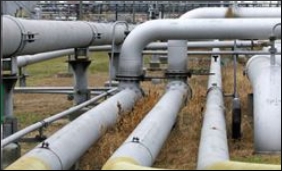|

|
Bangalore stares at water famine
|
|

|
|
| Top Stories |
 |
|
|
|
V.S Karnic | 07 Apr, 2012
Bangalore's population is growing at the rate of four percent a year, but water availability is going down steadily. The metropolis of nearly nine million needs to implement water rejuvenation projects worth Rs.24,000 crore ($48 billion) to prevent water famine in the city by the year 2020, says an expert panel.
Bangalore's population, growing at the rate of four percent per year, will reach 12.6 million by 2020 from the present 8.5 million, while water availability that year will be only 73 litres per capita per day (LPCD) if remedial measures are not taken now, the panel warned.
Water supply to the city from various sources now stands at 925 million litres a day (MLD).
The main source is the Cauvery river that originates at Talacauvery in Kodagu district, about 330 km from here, and is tapped at 80 km away from Bangalore for water supply. Other sources include a lake on the city's outskirts and thousands of bore wells in the city.
"This gives a per capita availability of 93 LPCD for a population of 10 million, which will go down to 73 LPCD by 2020 when the population of Bangalore will be 12.6 million," V. Balasubramanian, former additional chief secretary of Karnataka, told IANS in an interview.
Balasubramanian heads the Bangalore-based Centre for Policies and Practices which, along with Bangalore Environment Trust, has prepared a seven-point plan to avoid "Impending Water Famine" in the city.
"The population will not stop at 12.6 million in 2021 and 20 million in 2031 and the shortage will only keep on increasing unless remedial measures are taken now," Balasubramanian said.
Nearly half, Rs.10,000 crore, of the proposed project cost is needed just to remove encroachments and maintenance of 850 km of storm water drains and 'rajakaluves' (major canals) with proper servicing tracks, the action plan notes. Another Rs.5,000 crore is needed for rejuvenation and maintenance of lakes, for which Bangalore was once famous.
The government-run Lake Development Authority says the city had 262 lakes in the middle of the last century. The number has come down to 127, of which only 81 are in good shape. The rest have become cesspools due to discharge of industrial effluents, domestic sewage and dumping of waste, it says.
The other components of the Rs.24,000 crore action plan are reducing leakages in the 650,000 water connections in the city, segregation of sewage from storm water drains, upgrading existing and setting up new sewage treatment plants and rainwater harvesting.
Balasubramanian said since the project cost is huge, the state government should seek assistance from the World Bank, the Japan Bank for International Cooperation and the Asian Development Bank.
He said a 'Bangalore Water Supply and Water Recovery Plan' should be prepared by a competent agency and it should be presented to these organisations to fund its implementation.
Balasubramanian said the proposal will soon be submitted to the state government to take it forward.
|
|
|
| |
|
|
|
|
|
|
|
|
|
|
|
|
|
|
| |
| Customs Exchange Rates |
| Currency |
Import |
Export |
US Dollar
|
₹88.70
|
₹87 |
UK Pound
|
₹119.90
|
₹116 |
Euro
|
₹104.25
|
₹100.65 |
| Japanese
Yen |
₹59.20 |
₹57.30 |
| As on 30 Oct, 2025 |
|
|
| Daily Poll |
 |
 |
| Who do you think will benefit more from the India - UK FTA in the long run?
|
|
|
|
|
|
| Commented Stories |
 |
|
|
|
|
|
| |
|